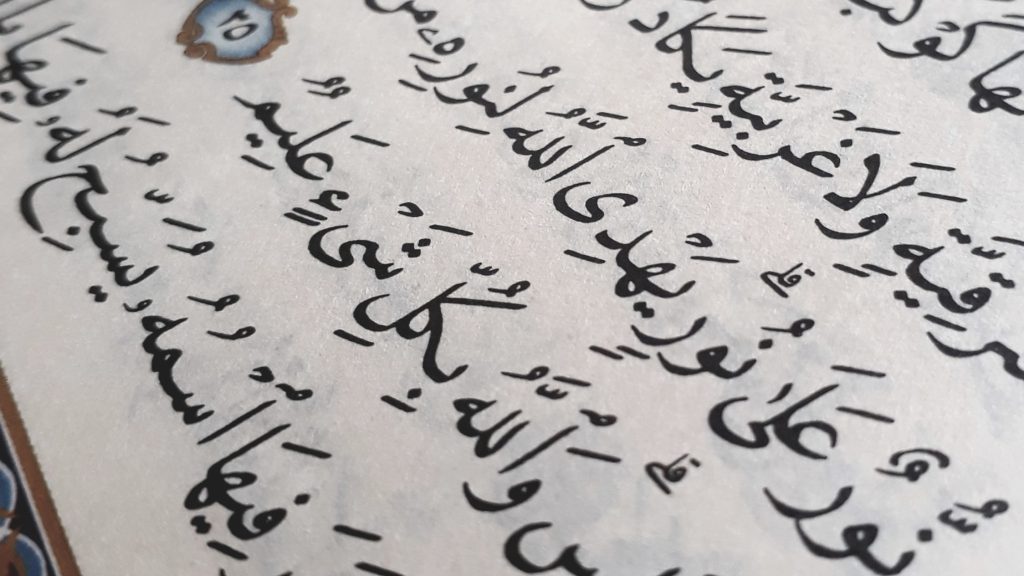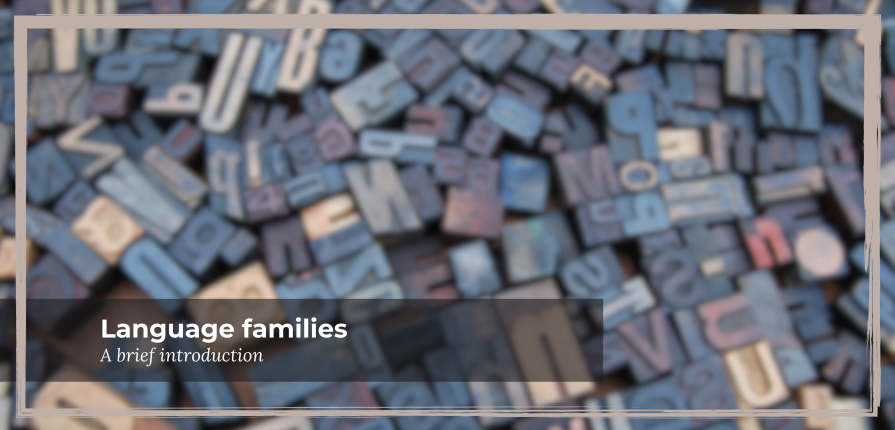As you dive into the world of languages, you will encounter the term “language families” quite often. You may find yourself wondering how many language families are there, what are the major ones, or to which family Chinese belong.
In today’s article, VINALOCALIZE will introduce you to a deeper yet brief and easy-to-understand exploration of the language families.
As briefly mentioned in the article about the brief history of human language, language families group related languages based on shared ancestry and history. The article also went over the largest language families in the modern world:
- Indo-European
- Sino-Tibetan
- Afroasiatic
- Niger-Congo
- Austronesian
This article on language families will take you a step further into the tapestry of language. We will give a more detailed introduction to the major language families in the world. Let’s dive in!
Major language families in the world
Indo-European
The Indo-European language family is one of the most extensive and widely spoken language families in the world. It encompasses many languages, stretching across Europe, parts of Asia, and even some regions in the Americas. What makes the Indo-European family particularly fascinating is its historical significance and the intricate relationships among its member languages.
Many of the world’s major languages, such as English, Spanish, French, Russian, Hindi, and German, are part of the Indo-European family. These languages may seem diverse, but they share a common linguistic ancestry that can be traced back to a proto-language, which linguists refer to as Proto-Indo-European.

The Indo-European language family’s historical journey is nothing short of remarkable. It evolved over thousands of years and gave rise to diverse languages with unique grammar, vocabulary, and phonetics. The family has experienced significant geographical expansion and diversification, and as a result, reflects human migrations and cultural exchanges. From the Romance languages that evolved from Latin to the Slavic languages of Eastern Europe and the Indo-Aryan languages of South Asia, the Indo-European family is a testament to linguistic adaptability and resilience. Therefore, exploring its member languages is like peeling back the layers of history and discovering the shared linguistic roots that connect people across continents.
Sino-Tibetan
Spanning a significant part of Asia, the Sino-Tibetan language family stands as a linguistic powerhouse. What makes the Sino-Tibetan family unique is its rich diversity as well as the vast number of speakers it encompasses.
Chinese, the shining star of the Sino-Tibetan family, is known for its intricate writing system, which relies on characters. Besides Mandarin, the most widely spoken dialect, several other Chinese dialects exist, including Cantonese, Shanghainese, and more. These dialects often vary greatly in pronunciation and vocabulary, hence making them a linguistic tapestry of their own.
The Sino-Tibetan family also includes the Tibeto-Burman branch, which comprises languages like Tibetan, Burmese, and Nepali. These languages play crucial roles in their respective regions and have unique features that distinguish them within the family. Exploring the Sino-Tibetan family offers insight into the fascinating linguistic diversity of Asia as well as the intricate web of languages that have shaped the continent’s cultural and historical landscape.
Afroasiatic
The Afroasiatic language family, as the name suggests, encompasses languages spoken primarily in Africa and western Asia. It is a diverse and intriguing family with several branches, each contributing to the cultural tapestry of the regions where they are spoken.
One of the most well-known branches of the Afroasiatic family is the Semitic branch. Semitic languages include Arabic, Amharic, and Hebrew, as well as several others.

Arabic, with its many dialects, holds the status of being one of the world’s most widely spoken languages. It serves as the language of the Quran and unites people across the Arab world. Amharic, spoken in Ethiopia, is another significant Semitic language known for its unique script and role in Ethiopian culture and history
The Afroasiatic family also includes the Berber branch, which encompasses the Berber languages spoken by indigenous communities across North Africa. These languages have ancient roots and are essential for understanding the diverse cultures of the region.
Overall, the Afroasiatic family showcases the linguistic richness of Africa and western Asia, offering a glimpse into the diversity of cultures, histories, and traditions that have shaped these regions. Exploring this language family provides an opportunity to delve into the intricate web of languages as well as the people who speak them, highlighting the vital role of language in preserving and expressing cultural identity.
Niger-Congo
The Niger-Congo language family is an extensive and fascinating linguistic group that spans much of sub-Saharan Africa. It is known for its incredible diversity, both in terms of the number of languages it comprises and the variety of cultures it represents.
One of the most prominent branches within the Niger-Congo family is the Bantu group. Millions of people across Africa speak Bantu languages, and these languages have played a pivotal role in shaping the continent’s linguistic landscape. In East Africa, Swahili, a Bantu language, widely serves as a lingua franca and boasts a rich literary tradition. The spread of Bantu languages and their impact on local cultures as well as languages is a remarkable aspect of African history.
Another branch of the Niger-Congo family is the Kwa group. This group includes languages like Akan, spoken in Ghana, and Yoruba, spoken in Nigeria. These languages have vibrant oral traditions and a strong connection to the cultural heritage of their speakers.
Exploring the Niger-Congo family is a journey into the heart of Africa, thus offering insights into the continent’s rich cultural mosaic. Its diversity and historical significance underscore the importance of language as a key element of African identity and heritage.
Austronesian
The Austronesian language family is an incredible linguistic tapestry that spans vast expanses of the world, from Southeast Asia to the Pacific Islands. This family is famous for its remarkable diversity and the intriguing connections it unveils between seemingly distant cultures.
One of the most widely spoken languages within the Austronesian family is Malay. Malay serves as the official language of countries like Malaysia and Indonesia. It is not only a practical tool for communication but also a symbol of national identity for these nations. Indonesian, a standardized form of Malay, is the lingua franca of the Indonesian archipelago and unifies its diverse population.
The Austronesian family also encompasses the Polynesian languages, spoken on islands scattered across the vast Pacific Ocean. Hawaiian, Tahitian, Māori, and Samoan are just a few examples. These languages are intertwined with the unique cultural heritage of their respective island communities.

Exploring the Austronesian language family takes you on a journey through some of the world’s most stunning natural landscapes as well as ancient seafaring traditions. The languages within this family are a testament to the enduring connections between humans, culture, as well as the environments they inhabit.
To sum it up
In the tapestry of human languages, the concept of language families reveals a profound interconnectedness that spans centuries and continents. These major language families serve as a testament to our shared linguistic heritage. They weave together the diverse threads of our world’s cultures. Each family tells a unique story of history, migration, and evolution, reflecting the incredible richness of human expression. As we delve into the intricacies of these language groups, we gain a deeper appreciation for the global symphony of languages that shape our world.
Want to discover more interesting language facts? Follow VINALOCALIZE and stay tuned for our updates!



